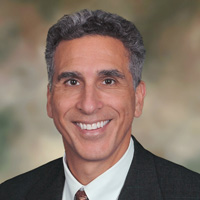The 3 Spending Stages of Your Retirement
Popular thinking is that you’ll spend less once you retire, but that’s not what I’ve seen in my own clients, at least in the first few years.


How much money will you need throughout your retirement years?
No magic formula can give you a precise answer, but I believe you can estimate costs. I also believe you should plan for three distinct phases of retirement.
Phase One: Retirement to age 75.
In this phase, people tend to be very active. They travel, play golf and visit their grandkids. They’ve got energy, they’re on the go and they’re spending money. I’ve seen articles that say retirees’ cost of living will go down 40%, but that’s not what I’ve witnessed in my clients’ lives. Whatever money people spent on working (the commute, lunches, clothes, etc.) after retirement is spent on cruises, hobbies and fun. In fact, during this initial phase of retirement, costs for retirees typically go up.
From just $107.88 $24.99 for Kiplinger Personal Finance
Become a smarter, better informed investor. Subscribe from just $107.88 $24.99, plus get up to 4 Special Issues

Sign up for Kiplinger’s Free Newsletters
Profit and prosper with the best of expert advice on investing, taxes, retirement, personal finance and more - straight to your e-mail.
Profit and prosper with the best of expert advice - straight to your e-mail.
I suggest planning for your cost-of-living to rise 4% per year in Phase One. That may sound like a very aggressive rate, but I believe in overestimating on all possible costs and underestimating on income. If you do that and reality is better than planned, your financial plan will be better than planned, too.
Phase Two: Age 75–85.
Retirees are still active in this phase, but they’ve slowed down. They’ve done a lot of the things they’d planned for retirement, and though they’re still traveling and pursing hobbies, they’re also settling into routines at home. Although people are still spending in this phase, the cost of living typically plateaus. I’d plan for an increase of 3% per year to be conservative. We want to overestimate our expenses in the planning process so that reality should be better than the plan.
Phase Three: Age 85 plus.
In this third phase of retirement, people tend to spend more time at home and with their families, and costs go down (as long as health problems are not an issue). It can be a good time to think about the legacy you’ll leave, and even to begin transitioning some of your wealth to heirs, but once again, so as to be conservative, I also suggest you continue to build in a cost-of-living increase of 2% a year. When planning for our clients, we try to overestimate on the bad stuff and underestimate on the good stuff. The idea being that, if we are OK under that scenario, we should be OK under something better.
Having worked with retirees for many years, I’ve seen hundreds of people go through these three phases. One client defined them this way: “Phase One is golf, golf, golf. Phase Two is golf, golf. Phase Three is golf.” No matter how you define the phases, I think you’ll agree that most people’s interests, abilities and spending habits change during retirement, that yours probably will, too, and that it’s wise to take that into account when estimating your retirement costs.
Profit and prosper with the best of Kiplinger's advice on investing, taxes, retirement, personal finance and much more. Delivered daily. Enter your email in the box and click Sign Me Up.

Ken Moraif is the CEO and founder of Retirement Planners of America (RPOA), a Dallas-based wealth management and investment firm with over $3.58 billion in assets under management and serving 6,635 households in 48 states (as of Dec. 31, 2023).
-
 You Saved for Retirement: 4 Pressing FAQs Now
You Saved for Retirement: 4 Pressing FAQs NowSaving for retirement is just one step. Now, you have to figure out how to spend and maintain funds. Here are four frequently asked questions at this stage.
-
 How to Stop These 5 Risks From Wrecking Your Retirement
How to Stop These 5 Risks From Wrecking Your RetirementYour retirement could be jeopardized if you ignore the risks you'll face later in life. From inflation to market volatility, here's what to prepare for.
-
 Hesitating to Spend Money You've Saved? How to Get Over It
Hesitating to Spend Money You've Saved? How to Get Over ItEven when your financial plan says you're ready for a big move, it's normal to hesitate — but haven't you earned the right to trust your plan (and yourself)?
-
 I'm a Financial Planning Pro: This Is How You Can Stop These 5 Risks From Wrecking Your Retirement
I'm a Financial Planning Pro: This Is How You Can Stop These 5 Risks From Wrecking Your RetirementYour retirement could be jeopardized if you ignore the risks you'll face later in life. From inflation to market volatility, here's what to prepare for.
-
 Are You Hesitating to Spend Money You've Spent Years Saving? Here's How to Get Over It, From a Financial Adviser
Are You Hesitating to Spend Money You've Spent Years Saving? Here's How to Get Over It, From a Financial AdviserEven when your financial plan says you're ready for a big move, it's normal to hesitate — but haven't you earned the right to trust your plan (and yourself)?
-
 Time to Close the Books on 2025: Don't Start the New Year Without First Making These Money Moves
Time to Close the Books on 2025: Don't Start the New Year Without First Making These Money MovesAs 2025 draws to a close, take time to review your finances, maximize tax efficiency and align your goals for 2026 with the changing financial landscape.
-
 Is Fear Blocking Your Desire to Retire Abroad? What to Know to Turn Fear Into Freedom
Is Fear Blocking Your Desire to Retire Abroad? What to Know to Turn Fear Into FreedomCareful planning encompassing location, income, health care and visa paperwork can make it all manageable. A financial planner lays it all out.
-
 How to Master the Retirement Income Trinity: Cash Flow, Longevity Risk and Tax Efficiency
How to Master the Retirement Income Trinity: Cash Flow, Longevity Risk and Tax EfficiencyRetirement income planning is essential for your peace of mind — it can help you maintain your lifestyle and ease your worries that you'll run out of money.
-
 I'm an Insurance Expert: Sure, There's Always Tomorrow to Report Your Claim, But Procrastination Could Cost You
I'm an Insurance Expert: Sure, There's Always Tomorrow to Report Your Claim, But Procrastination Could Cost YouThe longer you wait to file an insurance claim, the bigger the problem could get — and the more leverage you're giving your insurer to deny it.
-
 Could a Cash Balance Plan Be Your Key to a Wealthy Retirement?
Could a Cash Balance Plan Be Your Key to a Wealthy Retirement?Cash balance plans have plenty of benefits for small-business owners. For starters, they can supercharge retirement savings and slash taxes. Should you opt in?
-
 7 Retirement Planning Trends in 2025: What They Mean for Your Wealth in 2026
7 Retirement Planning Trends in 2025: What They Mean for Your Wealth in 2026From government shutdowns to market swings, the past 12 months have been nothing if not eventful. The key trends can help you improve your own financial plan.